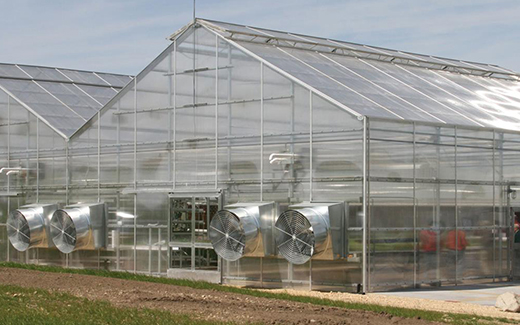4. Cultivation

(Troy Bertolino with Secret Recipe Plants, 2017, in Quincy, WA.)
We are what we repeatedly do. Excellence, then, is not an act, but a habit.
-Aristotle
Cannabis can be cultivated in indoor, outdoor or hybrid settings. As we’ll explore, each option offers pros and cons depending on your budget, experience, needs, and location.
Indoor cannabis cultivation is production which occurs entirely under artificially lighting, in a climate-controlled environment, while outdoor cultivation utilizes the natural photonic energy of the sun. Types of production vary based on the type of growing medium used, or in some cases the lack there-of, fertigation and watering methods, and lights.
While cannabis is often referred to as a ‘weed’ in that it’s thought to proliferate well naturally in a number of different environments, cannabis requires a lot more care to produce a product of quality.
After all, when was the last time you’ve heard of a farmer entering their prized agricultural product into the ‘Milk-Thistle Cup’.
Grow Space

Click here to display content from YouTube.
Learn more in YouTube’s privacy policy.
With indoor growing, it’s especially important to keep clinically sterile conditions to prevent the spread of airborne pests and pathogens. Likewise, while each square inch of floor space is potentially worth money, it’s important that you give your plants an adequate amount of airflow to keep the air moving with fans. In general cannabis grows best at 65-85 degrees fahrenheit, but remember for an indoor garden the temperature will probably be at least ten degrees higher in your grow room, when the lights are on.
If you are growing on the downlow in your house, you may want to consider adding scrubbers or air filters to your vents to prevent the strong odors of the grow room from alerting your suspicious looking neighbors. Also best practices with this type of garden is to be careful not burn down your house or apartment… just saying.
I would like to die on Mars. Just not on impact.
-Elon Musk
Growing Medium

This world is but a canvas to our imagination.
-Henry David Thoreau
The wide range of media options for cultivation include soil, soilless, rockwool, hydroponics, and even air! It’s important to pick the right medium that’s going to work best for your budget, space, and experience level.
Coco Coir

The two basic items necessary to sustain life are sunshine and coconut milk.
-Dustin Hoffman
Coco Coir soilless mixes are a popular grow medium for both beginners and masters. It allows for quick and easy moisture and nutrient absorption. Coco is often used to start seeds that are then transplanted into another medium, whether a soilless mix or soil. Coco clones or seed starts may be used in Aeroponics or Aquaponics only after the medium is completely washed off the root system.
The downside of Coco is that it does retain water so dry downs may be required between feeding or watering, depending on root size and pot size, to name a few . This is compounded if you do not have an accurate way to measure the moisture level. Also, the coco-coir itself in the soilless mix can be too salty depending on the source. Be sure to check ppm or ec prior to planting in it. If necessary, leach until salts are sufficiently reduced and find a new provider.
Soil

Life is hard. Then you die. Then they throw dirt in your face. Then the worms eat you. Be grateful it happens in that order.
-David Gerrold
Soil, being what it sounds like, is a great starter grow media, and more forgiving than other more advanced options. In fact, the better the soil you get, the more forgiving it should be. Make sure it’s screened for pesticides and herbicides though.
Whether soil or soilless, you should be able to get a certificate of analysis for any medium you are considering using before buying it. If not, find a new source.
Hydroponics
Click here to display content from YouTube.
Learn more in YouTube’s privacy policy.
Do you ever feel like you’re getting sick, and then you have a glass of water and you’re like, ‘oh, that’s why people drink that.’
-Dina Hashem
Soil-less grows are also popular. Hydroponics replaces the growing medium with a system over water. Nutrients are mixed into the water and absorbed into the root structure.
There are many advantages to a hydroponic indoor garden set up. The hydroponic system uses a liquid reservoir for the plants, feeding the roots with salt-based nutrients that can be quickly absorbed. This quicker nutrient uptake can enable faster growth and production and may result in less water usage, depending on the system design.
The downsides of hydroponic cultivation are that it is high maintenance, requires more experience due to the plants direct access to nutrients, and that potentially requires more oversight. As such, it is not usually recommended for new growers, as there is little margin for error in this method.
Aeroponics

Click here to display content from YouTube.
Learn more in YouTube’s privacy policy.
If you have built castles in the air, your work need not be lost; that is where they should be. Now put the foundations under them.
-Henry David Thoreau
Aeroponics are innovative systems in which the plant’s roots are suspended in the air and fed nutrients and water through mist emitters. Aeroponics done properly enables targeted and effective water delivery, as well as efficient water use and recovery. It is often used as a way to root clone cuts.
Like hydroponics though, the downside of aeroponics is that they are not beginner friendly. The traps to growing either hydroponic or aeroponic really come down to the skill of cultivators and routinely scheduled maintenance. Maintenance includes monitoring, cleaning, and sanitizing your reservoir, lines, and pumps. Regularly.
Aquaponics


I bought some powdered water, but I didn’t know what to add.
-Steven Wright
Aquaponics combines aquaculture (the process of farming fish) and hydroponics. The cannabis grows the same as it would with hydroponics, except there’s no need to add nutrients because the water is enriched with waste, debris, and discharge from the fish, or in other words- it’s full of nutritious, delicious fish-shit!
This method begins with a large freshwater fish farm, think koi or tilapia, with a hydroponics array installed above or near the fish, where the fish will be in position and poised to poop in your pool, which will then soak your roots in their smelly, healthful excrement.
Special pumps are designed to pull the nutrient-laden water from the lowest level of the fish environment and pump it into the hydroponic system. The plant roots absorb the minerals and filter the water, which cycles back to the fish.
The reason the fish turds are so fantastic is that they include nitrogen and trace amounts of dozens of minerals that will provide a full balanced meal to your plants. Also, if you fail miserably at your business, you can always eat the fish!
The downsides to aquaponics are the same as hydroponics, but also include the downside of setting up a fish farm, and having to care for fish, if you don’t already have that infrastructure in place. Also if you have a lot of fish it can be hard to keep track of the ones that you’ve named and formed a personal relationship with.
Needless to say, the challenges associated with building a fish farm make this method more cost prohibitive for the vast majority of people that are looking to grow some pot, but aren’t already rolling deep in fish. In fact, the only indoor setup that is more complicated and advanced than aquaponics is…
Zeroponics

In the beginning the Universe was created. This has made a lot of people very angry and been widely regarded as a bad move.
-Douglas Adams
Zeroponic, or ‘space-weed’, is cannabis that has been cultivated in zero or little gravity. Being that I, personally, made this last one up, we can’t say for certain if this media-less cannabis cultivation technique has ever been tested, but we wouldn’t put it past Elon Musk, to have gotten ‘higher’ up in orbit than any stoner in earth’s history.
Location, Location, Location!

(A Bald Eagle, stands listlessly in the snow, wondering how it ended up in Central WA, 2018.)
The domestic US cannabis industry grew up in an area of California known as the Emerald Triangle. This scenic region includes Humboldt, Mendocino, and Trinity counties, in Northern California, close to the Oregon border.
Most of the cannabis produced over the years in this area were outdoor flowers from ‘guerrilla gardens’, in towns where everyone from your neighbor to the local sheriff started growing pot.
This part of Northern California, is the historic center of domestic outdoor cannabis production and commerce in the US, and also has the distinction of being one of the worst climates, in all of California, to grow cannabis outdoors!
In terms of factors that one would consider when starting a ‘sungrown’ cannabis garden, first and foremost, would be the weather and sunlight.
Following that are other concerns like access to water, supplies, and customers, as well as the cost of power.
Humboldt county doesn’t even check half of those boxes!
It’s rainy, damp, and dreary, has the least amount of sunlight in California, and is far away from all of the metro markets in the State.
There’s a reason that farmers in California grow the majority of the nation’s fruits and vegetables near the Central Valley, as opposed to up north, in the misty mountains.
You’d almost be better off on the opposite end of the spectrum, starting a garden in Death Valley! At least it would be drier there.
By the way, if you decide to do this, make sure you have access to adequate sources of irrigation water, and vulture repellent.
Despite the bad weather though, there was a reason that the cannabis industry bloomed in the Emerald Triangle. People fled to Northern California from other parts of the State, country, and even the world, to grow there, not because it was the best place to cultivate cannabis, but because they could hide out in the hills and operate illegally, under the cover of the redwood trees!
While there wasn’t a lot of sun, at least the clouds made it hard for the helicopters to see!
While Monterey is a much, much better place to produce cannabis, being a flat, wide open, expanse with the perfect Mediterranean climate, it had one big downside. There was nowhere to hide!
Now that you no longer have to obfuscate your operation, you want to think of the most practical considerations for an outdoor grow in your state, starting with the weather and the amount of annual sunlight.
When we chose our spot in Washington for an outdoor grow, we strategically settled on the environment of the Columbia Valley Sun Basin, because of dry weather, lots of sun, and freakishly long days at the high northern latitude.
Sometimes when you’re in a dark place, you think you’ve been buried, but you’ve actually been planted.
-Christine Caine
Sungrown Cannabis Cultivation

Weather forecast for tonight: dark.
-George Carlin
‘Sungrown’, simply means that the flowers are grown in the open air and in the natural light of the sun. This also sounds a lot better, from a marketing perspective, than saying, “I grew this weed, outside, man!”
While the wholesale and retail prices for these flowers are the lowest, one could make the argument that this is the best way to go.
Depending on your budget, location, infrastructure, and experience, this can possibly be the cheaper method to produce flowers.
Additionally, without being constrained by buildings and other major infrastructure requirements, it allows for the best scalability, and the most space to produce large, high yielding plants.
While sungrown flowers have the lowest perceived value, they have the highest ceiling in terms of terpene production.
Right now, there’s no question that consumers value indoor flowers much more greatly than sungrown flowers, but will that always be the case?
To gain perspective, let’s consider how this situation compares to consumer behavior in the alcohol industry. Have you ever seen a bottle of wine marketed, with a competitive feature being, that the grapes the wine was produced from, were grown indoors, inside a warehouse, in an industrial part of the city?
Of course not, what a stupid question!
It’s kind of silly if you think about it. Central to marketing wine is the idea of the beautiful, natural setting where the wine was produced.
They sell consumers a narrative of a scenic area where the grapes are ‘sungrown’ in fresh air and unspoiled, native soil.
Will cannabis consumers ever evolve in the same direction as their sophisticated, wine drinking brethren, and overcome the perceived value gap between flowers produced by the sun vs those produced by a light bulb?
We can’t claim to have the right answer, but this is a question that will undoubtedly be asked by many start-up companies over the next few years.
The Best of Both Worlds- A Greenhouse Garden

Click here to display content from YouTube.
Learn more in YouTube’s privacy policy.
Truth is found neither in the thesis nor the antithesis, but in an emergent synthesis which reconciles the two.
-Georg Wilhelm Friedrich Hegel
A greenhouse is a great hybrid option that enables you to gain the best benefits of both indoor and outdoor cultivation. The types, features, and functions of different available greenhouse models vary greatly, but the basic idea is that you are able to utilize the free natural light of the sun, while being able to control, or influence, your temperature and air quality. You can also apply supplemental lighting as needed.
Having a greenhouse infrastructure in place can be especially helpful if you intend to do a light deprivation crop.
Light Deprivation
Click here to display content from YouTube.
Learn more in YouTube’s privacy policy.
Everything has its wonders, even darkness and silence, and I learn, whatever state I may be in, therein to be content.
-Helen Keller
Light deprivation cannabis cultivation involves artificially manipulating the lighting cycle of cannabis plants to induce early flowering. This is done through the use of black-out tarps, which can be installed to open and close with automated rollers on tracks affixed to the ends of the greenhouse. Typically this is done by alternating between 12 hour cycles of light and darkness.
Which is better, Light Deprivation vs. Full Term growing?
There are several advantages to ‘light-depping’ an outdoor crop over allowing it to grow the full term.
One big advantage of light deprivation growing is that it allows you to get your product out to market sooner.
If you’re just starting a farm, you may not have any RO or income at all, until your first crop comes in. If this is a full-term crop, it may not be ready to Harvest until October or even November! That also means it probably won’t be dry, cured and ready for sale, until at least December or January.
This is also by the way the worst time of year to sell your crop, as the market is flooded, and you and every other annual grower is desperately looking to recoup their overhead from the previous year.
Light-depping your crop allows you to start pulling income in by September or October. This could make the critical difference if you underestimated your operating or start up budget.
Another advantage of light deprivation is that it allows you to get two or more crops a year out of an outdoor garden.
A final advantage of using light deprivation is that it can help you stagger a large crop and start harvesting some of it early, breaking up the workload, and freeing up drying space later.
On the other hand, setting up light deprivation takes more time and money than a full-term garden.
Additionally, it’s questionable that even accounting for the extra crop you can get depping, that you would be seeing any net gain in production. In fact, a net loss is more likely to occur unless you have enough indoor infrastructure allowing you to start your crops earlier than outside weather would normally allow. Despite light-depping your crop to finish early, this would still give you a ‘full’ growing cycle.
The reason that bigger plants can ultimately yield disproportionally more than smaller plants occupying the same footprint, is that after cannabis plants reach a certain size and height, the flower production starts to follow an exponential growth curve.
This means that if you have two plants that are approximately, five feet tall with five foot diameters, and each produced one pound, you won’t yield as much as you would with a 10-foot-tall plant with a 10-foot diameter which produced 3.5 pounds in the same space.
Key Chapter Takeaways
The Do’s and Don’ts of the Dope Industry
- Do– Source the right location for your garden
- Do– Consider a hybrid greenhouse approach
- Do– Pick the right growing medium that’s the best fit for you
- Don’t– Locate near to another farm where pesticides are being used
- Don’t– Forget to take proactive and preventative measures against pests
- Don’t– Ensure that you give your plants enough spacing and airflow
